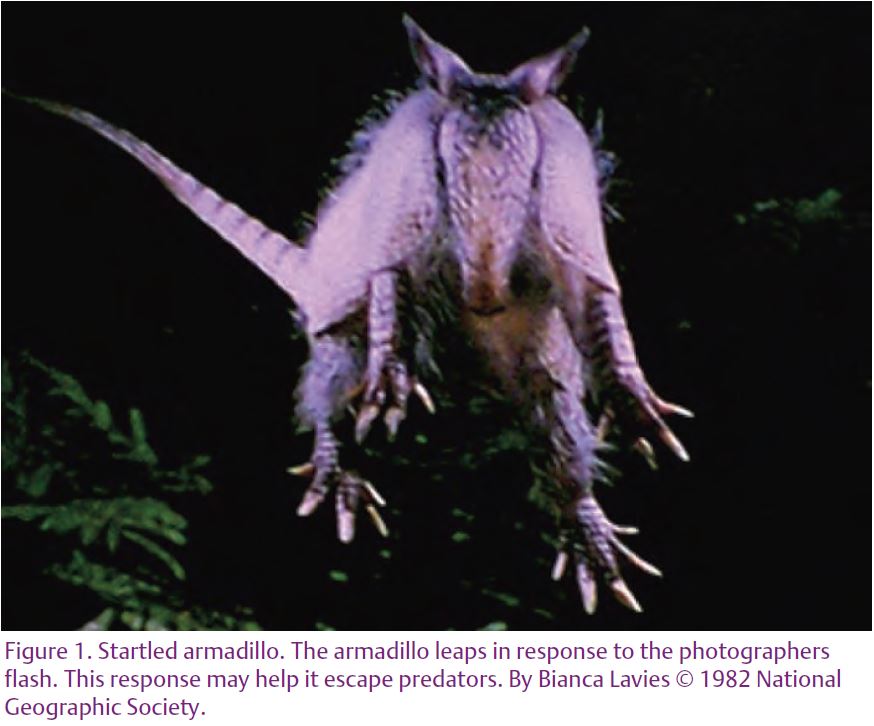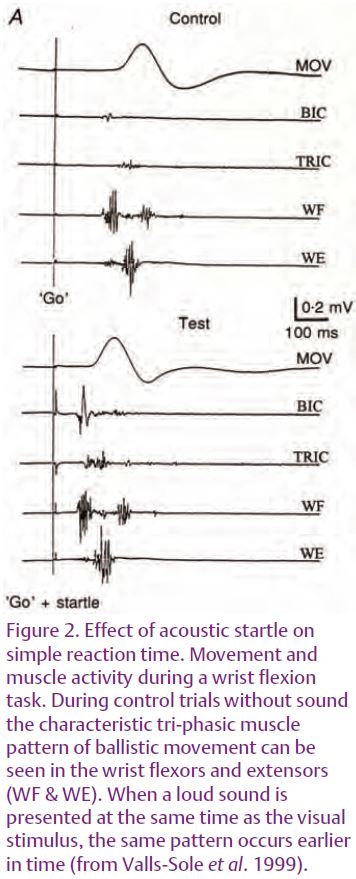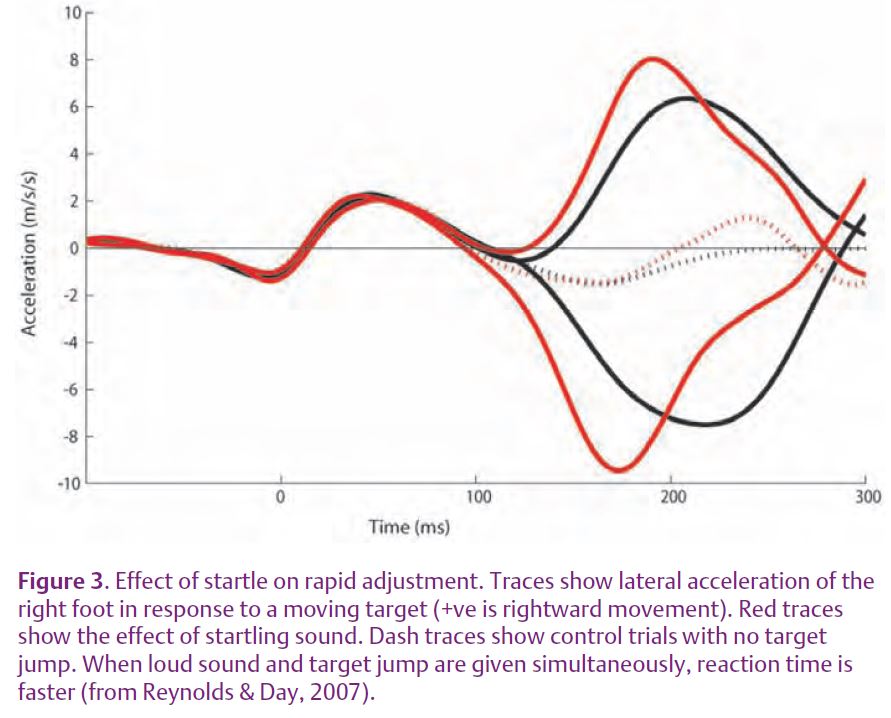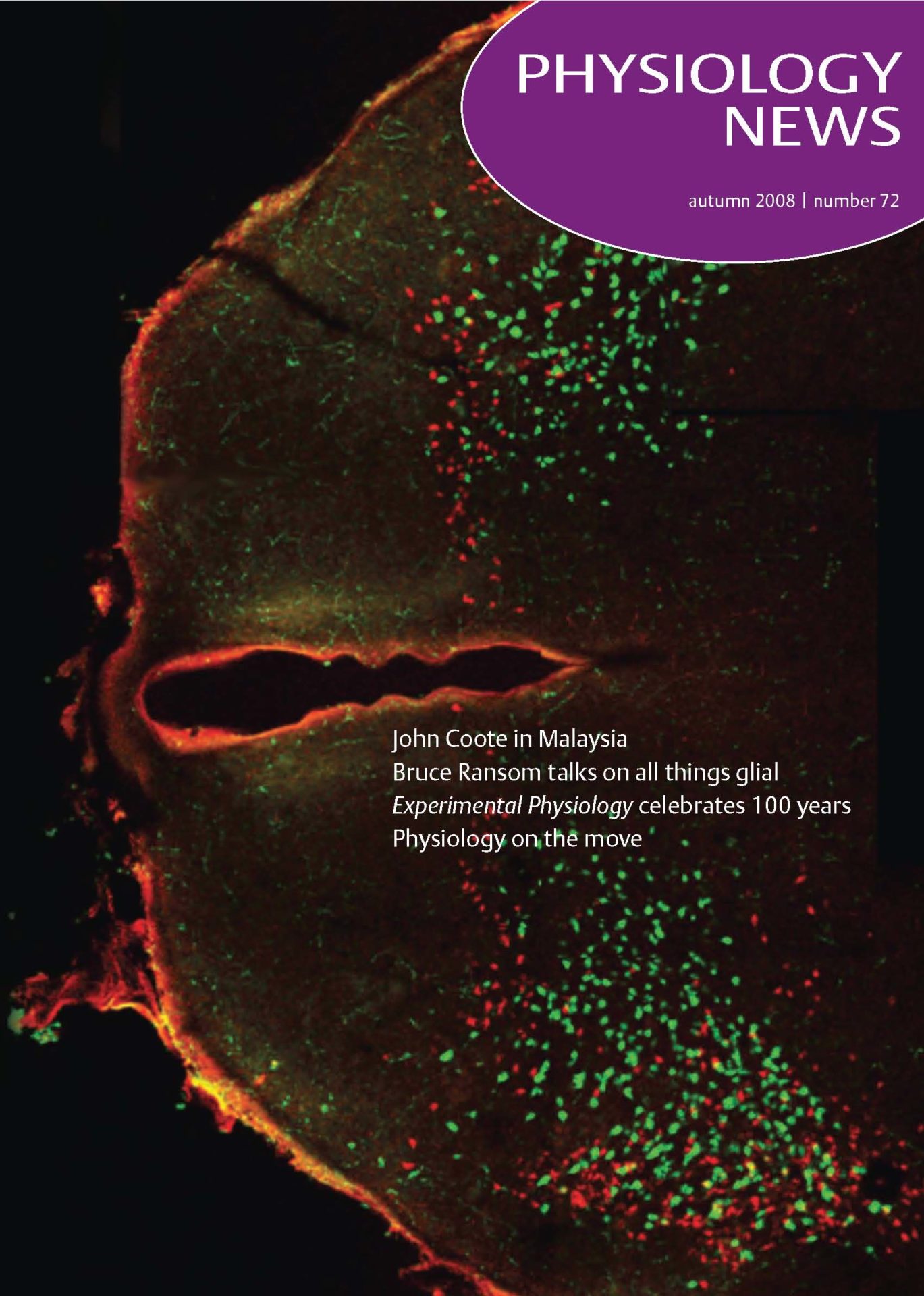
Physiology News Magazine
Improving reaction time with a bang
If a loud noise or unexpected tap on the shoulder has ever caused you to jump out of your skin, you may have wondered about the purpose of the startle reflex. Common theories include protection against injury from predators and preparation for fight or flight. Recent research shows that startle also facilitates the brain’s ability to process and react to other stimuli
Features
Improving reaction time with a bang
If a loud noise or unexpected tap on the shoulder has ever caused you to jump out of your skin, you may have wondered about the purpose of the startle reflex. Common theories include protection against injury from predators and preparation for fight or flight. Recent research shows that startle also facilitates the brain’s ability to process and react to other stimuli
Features
Raymond F Reynolds (1) & Brian L Day (2)
1: School of Sports and Exercise Science, University of Birmingham, Birmingham, UK
2: Sobell Department of Motor Neuroscience and Movement Disorders, Institute of Neurology, UCL, London, UK
https://doi.org/10.36866/pn.72.23

The startle reflex occurs in a variety of animals including mammals, insects and fish (Eaton, 1984). In humans it can be elicited by loud unexpected sound, typically >110dB. This results in widespread involuntary muscle contraction and a rise in heart rate. Commonly used indicators of startle are eye and neck muscle twitches, which occur approximately 35 and 60 ms after sound onset, respectively. These remarkably fast responses are mediated by a simple neural circuit involving the caudal pontine reticular formation in the lower brainstem, which receives direct input from various auditory nuclei. Startle may offer protection against predators by minimising bodily damage and preparing the body for fight or flight (Fig. 1). However, the true purpose of the human startle reflex, if any, remains a matter of speculation.

In addition to its direct effects, startle can have secondary effects upon ongoing behaviour. One might assume these would only be obstructive, and this is certainly true for actions which demand a high level of precision. However, research over the past decade shows that the acoustic startle response can actually enhance performance on some basic tasks. When an experimental subject is asked to flex a wrist as quickly as possible following a flash of light, reaction time (RT) is almost halved when the visual stimulus is accompanied by a startling sound. In this ‘simple’ reaction task (SRT), the required movement is known in advance and so it can be prepared and stored. Startle causes this stored response to be released earlier than normal (Valls-Sole et al. 1999). This is not merely due to the startle response being incorrectly interpreted as the intended movement. Close inspection of muscle activity reveals the purposeful characteristics of an intended movement, not a random burst (Fig. 2).

What about more complex movement? In a ‘choice’ reaction task (CRT), the required movement depends on the nature of the stimulus. For example, this might involve pressing a button with the right or left hand, after seeing a square or triangle, respectively. In this case the required movement is not known in advance and so cannot be prepared. Some degree of visual processing is required, before the appropriate movement can be selected. Previous research suggests that startle interferes with CRT. However, two papers in a recent edition of The Journal of Physiology show that RT can be improved in certain types of CRT. Oude Nijhuis et al. (2007) applied acoustic startle when subjects rotated their head to the left or right, after seeing a visual stimulus. Startle reduced reaction time by 56 ms. Reynolds & Day (2007) looked at visually guided step adjustments using a target jump paradigm. These reactions are very fast even without startle (<125 ms), but startling sound caused them to be reduced further by ~20ms (Fig. 3). In both of these tasks, the startle response is not simply causing the early release of a prepared response, since the required movement is not known until the visual stimulus is presented. Instead, it reduces the time taken to process a visual stimulus and select the appropriate response.

What is the mechanism by which startling sound improves reaction time? The answer may lie in the brain areas responsible for generating the behaviour. For SRT tasks, it has been suggested that movements can be prepared and stored at a sub-cortical level. The startle reflex, generated in the lower brainstem, interacts with this stored motor programme causing its early release. For CRT tasks startle may also exert its effects at a sub-cortical level, but in this case to improve visuomotor processing. So it may be the case that only basic, reflex-like behaviour which operates through sub-cortical circuitry can benefit from startle. Visually guided limb adjustment and head orientation both fall under this category (Walton et al. 2007; Day & Brown, 2001). Conversely, more complex tasks involving arbitrary visuomotor associations depend more upon cerebral processing, and so may only be disrupted by startle. Further behavioural data will hopefully resolve this issue.
References
Day BL & Brown P (2001). Evidence for subcortical involvement in the visual control of human reaching. Brain 124,1832–1840.
Eaton RC (1984). Neural mechanisms of startle behaviour. Springer.
Nijhuis LB, Janssen L, Bloem BR, van Dijk JG, Gielen SC, Borm GF & Overeem S (2007). Choice reaction times for human head rotations are shortened by startling acoustic stimuli, irrespective of stimulus direction. J Physiol 584, 97–109.
Reynolds RF & Day BL (2007). Fast visuomotor processing made faster by sound. J Physiol 583, 1107–1115.
Valls-Sole J, Rothwell JC, Goulart F, Cossu G & Munoz E (1999). Patterned ballistic movements triggered by a startle in healthy humans. J Physiol 516, 931–938.
Walton MM, Bechara B & Gandhi NJ (2007). Role of the primate superior colliculus in the control of head movements. J Neurophysiol 98, 2022–2037.
